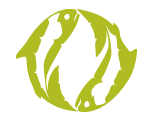On November 10, I’ll be participating in what I expect to be an interesting discussion hosted by the Cascadia Green Building Council.
The event will ask “what’s next?” for Northwest Water Issues and focus on moving ideas forward – into action. Doors open at 5pm for networking and refreshments; panelist discussion and action brainstorm 5:30-7pm. The location is in downtown Seattle at the Rainier Square Conference Center, 1301 5th Ave, 3rd Floor. It’s $5 for Cascadia GBC Members and $15 non-members. You can register here.
I’ll be joined on the panel by Steve Moddemeyer, who leads CollinsWoerman’s Sustainable Development practice, and Aaron Henderson, the Environmental Health Natural Resources Program Manager for Clark County Public Health. The panel will be moderated by Joel Sisolak CGBC’s Director of Education. The discussion will be facilitated by Teresa Burrelsman, a senior consultant at Eco Via Consulting.
It should be fun. You’ll find more info here.










Ray Kinney
Sorry I did not know that this water brainstorming event was taking place. I just became aware of Sightline by reading the Jennifer Langston Northwest Ocean Acidification paper. I have been following the research on ocean acidification as part of study of Oregon coast range freshwater acidification pressures associated with river mussel declines locally. As acidification events increase in salmon freshwater habitat, pH and calcium carbonate levels dip lower with increased frequency and severity. If we can come to recognize acidification pressures more realistically here, we may be able to buy more time to conserve the calcium budget of other watersheds that are at somewhat lower immediate risk for decreased acid neutralizing capacity, and thereby enable better natural resource sustainability decisions.Forestry management practices that have altered the %vegetation cover of red alder compared to that of red cedar may be adding acidification pressure that combines with atmospheric CO2 increase and toxic metal NPS pollutant increases (calcium utilization inhibiting metals, lead and cadmium, etc. from tons of yearly deposition of lost lead fishing sinkers and degrading railroad bridge coating pollution). These pressures appear to be possible causative factors in the excessive shell degradation to perforation stage in river mussel shells and subsequent premature mortalities and reduced recruitment.
All of this affects limiting factors for salmon population recovery in these watersheds. These preliminary findings scream out for further assessment. I’ve just signed up to Sightline notifications for future venues for water quality issues in the PNW… sorry to have missed last weeks opportunity to network.